I’m getting older.
I was lucky enough to get an iPhone 7 Plus at 8:15AM on launch day. I played around with it for a day and fell back in love with the large Plus-sized screen. It was like returning home, in a way.

I’m so glad to be back to the Plus-sized iPhone.
I pulled into the gas station early the next morning, pumped my gas, and headed inside to pay. I pulled out my iPhone, double-tapped the home button, and tapped my iPhone to the credit card terminal to pay for my gas.
It took half a second for the young, spunky cashier to notice my new toy.
“Hey! Is that the new iPhone?”
I chuckled.
“You bet,” I said. “Picked it up yesterday.”
“Do you mind if I hold it for just a sec?”
I nervously shrugged.
“Ok. Sure. Why not?” I replied.
The cashier took the phone carefully, tapped the home button, swiped to the left on the screen, and immediately had the camera up and running.
“Woah,” the cashier began, “2x is awesome! And the antenna lines are gone. And the home button feels wild. Dude, that iPhone is so sick. So sick. What do you think of the new iPhone?”
“Well…” I paused to think for a second. I wasn’t exactly sure what “Sick” meant. “You know, it’s an iPhone. Same old iPhone. It’s a bit faster, with a slightly better camera, and a bit of a brighter screen. If it’s an iPhone, it’s going to be great, right?”
I threw that “Right?” part in there just in case the excited teenage cashier was a non-iPhone user, but my Canadian-esque worry was misplaced.
“Totally man. All iPhones are great. But this one is just so sick. I think I’m going to get the matte black one.”
That short conversation is pretty reflective of the iPhone today:
- The iPhone’s design is instantly recognizable.
- The iPhone’s camera is a headline feature.
- The iPhone’s software is consistent, no matter the device.
The conversation also pointed out that the younger generation — who may not even remember a time when the iPhone didn’t exist — is immediately more skilled and savvy with the device than myself. But I digress.
I’ve owned the iPhone 4, iPhone 5, iPhone 6 Plus, iPhone 6s, and now iPhone 7 Plus. Five iPhones, four screen sizes, and five screen size changes.
But throughout those five iPhones, one thing always remained: the iPhone.

Despite Phil Schiller’s list of 10 new features, the iPhone 7 Plus is still very much an iPhone.
Every generation brings a few wanted changes. Every generation rids itself of past flaws. And at the very core of each generation is the reality that the iPhone is a superior device. A device beyond replacement. A device in little need of change.
Of course the iPhone 7 Plus is the greatest iPhone yet. It’s faster, stronger, and smarter than ever before. I mean, it darn well better be.
But fortunately, it’s still an iPhone. My trusty, ever-evolving iPhone.
New Design
On stage, Phil Schiller talked about 10 new features of the new iPhone 7 and 7 Plus, and he began with the iPhone’s new design.
But let’s not kid ourselves: There’s very little new here in terms of design. There are only a few discernible design changes in the new iPhone 7 Plus, all of which are visible upon a more keen eye or closer inspection.

The most obvious design change is the larger camera module on the back of the iPhone 7 Plus, and antenna lines that now round the top of the device.
The most obvious of those changes are the redesigned antenna lines, and it’s only extremely obvious on the Rose Gold, Gold, and (arguably) Silver models. Having the antenna lines wrap around the top of the chassis allows for the most seamless look we’ve ever seen on an iPhone, and I think this design choice is an absolute marvel. It looks even better on the Black and Jet Black models.
The removal of the headphone jack leaves a cleaner, perfectly symmetrical bottom edge on the iPhone 7 Plus. I believe this is what Steve Jobs and Jony Ive wanted the iPhone to look like from the onset, and after 10 iPhone generations, we finally have symmetry.

That camera bump is now an honest to goodness bump. But it’s the most beautiful bump you will ever see.
We certainly don’t have symmetry up in the iPhone’s camera corner. Unlike the iPhone 6 and 6s, where the camera bump appeared to look like a pushed-on, flat-head thumb tack, the iPhone 7 Plus has a milled, purposeful, and beautiful camera bump. Where the Black iPhone 7 Plus takes the cake in terms of sleekness, the Silver model’s camera bump is the pinnacle of camera bump design — the way the ridge reflects light just emits elegance.
When looking at the iPhone 6s Plus and 7 Plus straight on, the only giveaway between the devices is the increased size of the front speaker. The earpiece speaker extends a little further to the edges of the iPhone, giving more space for the front-firing stereo speaker. Because of the size of the bezel around the iPhone’s screen, any way to make more use of the bezel helps the iPhone look sleeker.

There are small design changes throughout the iPhone 7 Plus, like the slightly altered design of the volume buttons.

But, despite all the design bragging, the iPhone 7 Plus looks a lot like the iPhone 6 Plus and 6s Plus before it.
A few other observations in terms of design
- Some of the legal markings on the bottom of the iPhone’s back side have been removed. Like the presumed idealistic and symmetrical bottom edge, I believe, one day, all markings aside from “iPhone” will be removed from the backside.
- “iPhone” and all legalese is written in a new font. San Francisco has officially won the typographic war inside Apple’s headquarters.
- The volume buttons on the left side no longer have that shiny aluminum finish in between them. The space between the buttons is now finished in the same manner as the rest of the iPhone’s edge.
- The second camera on the iPhone 7 Plus hinders the phone’s ability to lay flat on a desk even more so than prior generations. I never noticed the iPhone’s inability to lay flat in prior generations, but this one is definitely apparent.
- That second camera also makes previous generation cases inaccessible. I have an old Twelve South Bookbook for iPhone 6 Plus/6s Plus which I was hoping would fit the new iPhone. Alas, it wasn’t meant to be.
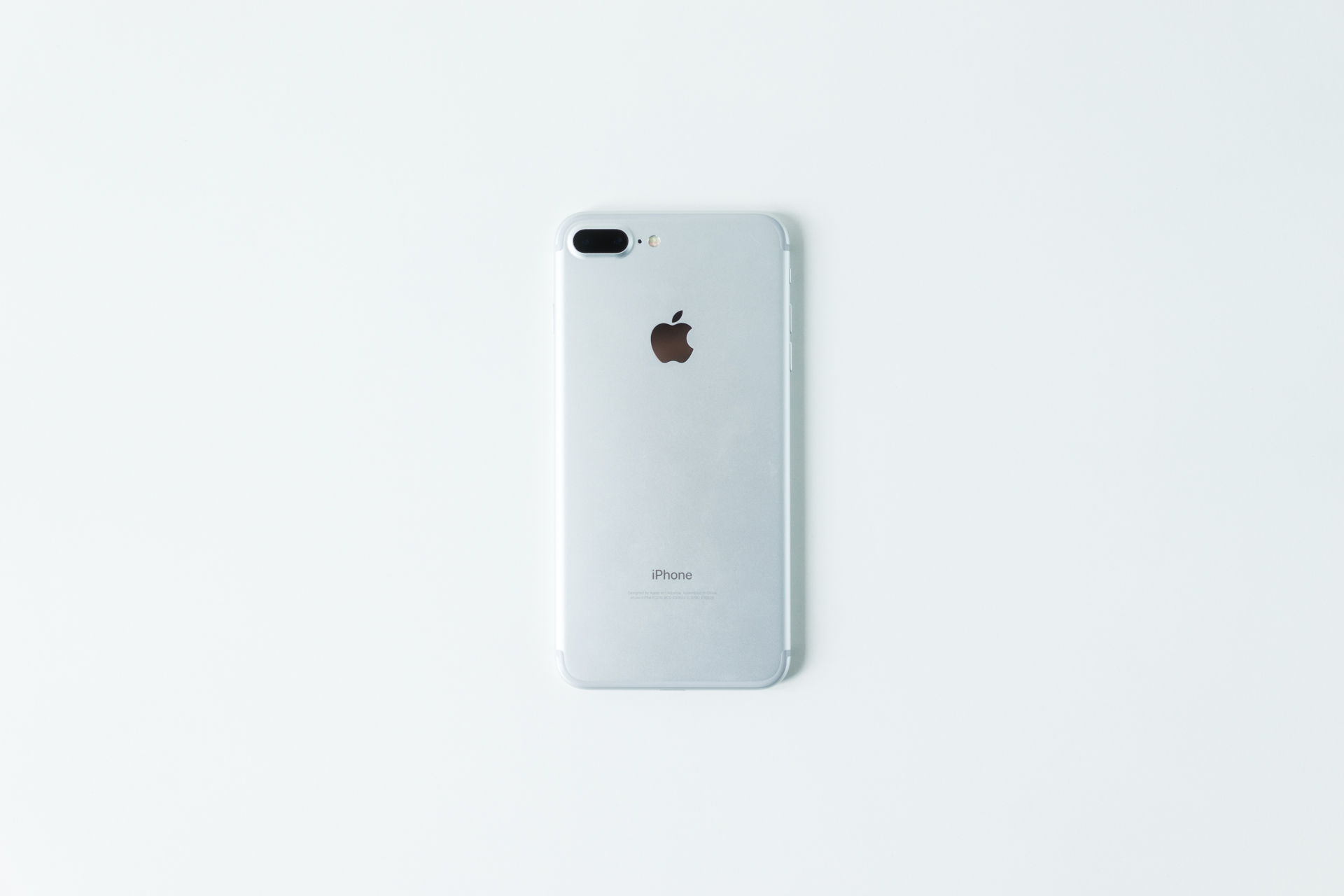
The backside is now free of legal markings, has a new “iPhone” font, and looks more consistent than ever with those altered antenna lines.
I’ve been very specific about design changes in the iPhone 7 Plus because of how few there are. Perhaps the biggest design change is the inclusion of the new Jet Black model. The Jet Black’s precision finished exterior is something to behold. But between the smudges on the front and the smudges and scratching on the back, I’ll be just fine with my unchanged Silver model.
Home Button
Much has been made of the iPhone 7 Plus’ new home button. Be it the skin contact needed to activate the taptic engine, or the hingey feeling it gives the bottom of the iPhone, or the odd tactile feedback it gives when pressed, early indications seemed to point to disappointment with the new home button.

The iPhone 7 and 7 Plus’ home button is no longer a button. Instead, it’s a sensor which is activated when your bare finger presses down. The Taptic Engine inside the iPhone vibrates, much like the trackpads on the new MacBook and MacBook Pros. It doesn’t feel like a real click at all, but I think the feedback grows on you after awhile.
I think the button — or whatever you want to call it — eventually grows on you. You quickly get used to the odd sensation it gives when pressed, and the little vibrations and haptics built into iOS are nearly addicting. Those haptics are something I believe only Apple can pull off properly.
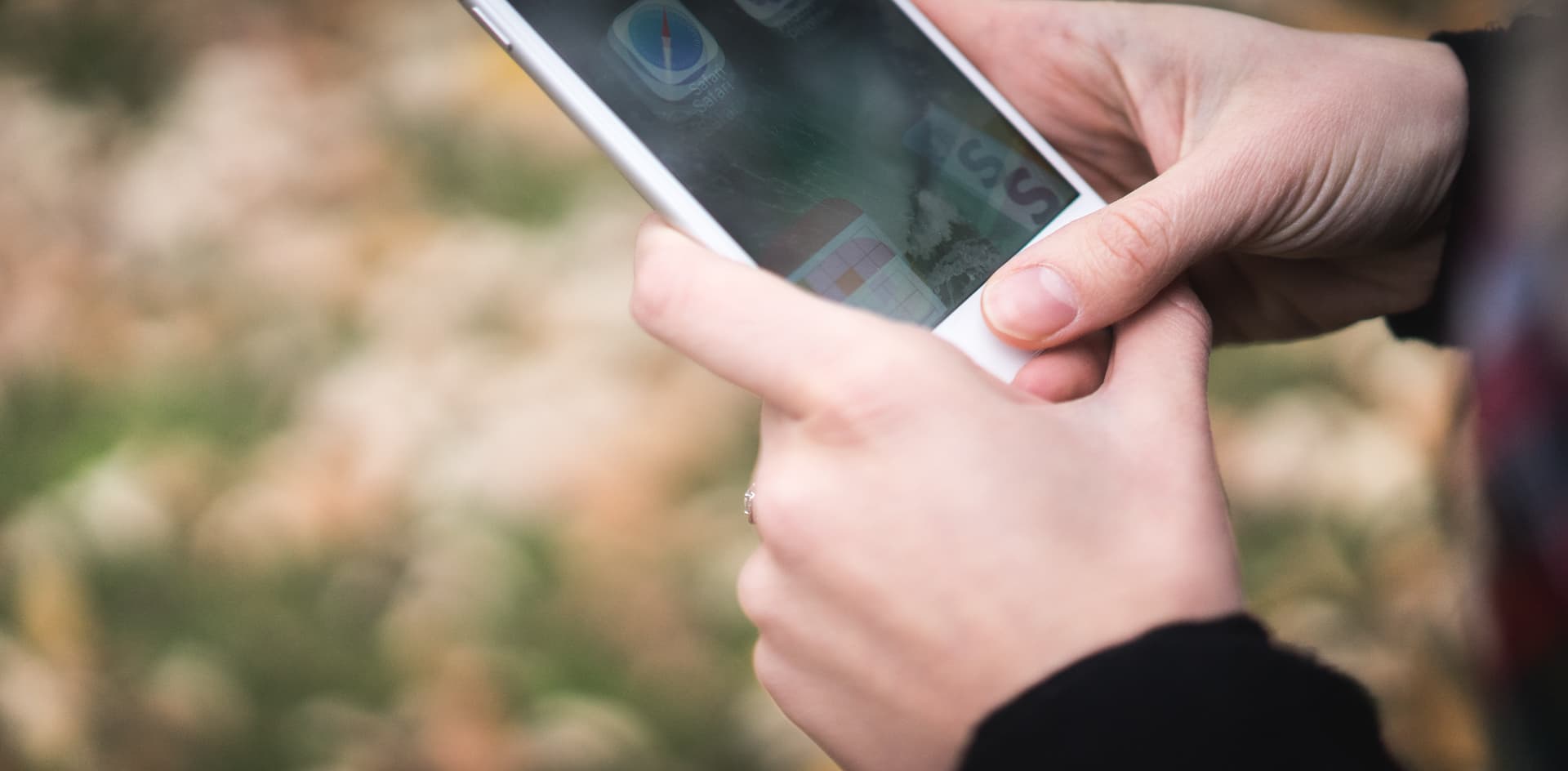
On occasion, I’ve found the iPhone 7 Plus’ A10 Fusion chip to be too fast for the new home button. iOS will begin to return to the home screen before I can double press the button to bring up the multi-tasking app switcher. It’s not a bad experience at all, it’s just a small downside of the new home button.
The home button comes with three different settings and your preference is set when you boot up the phone for the first time. I immediately jumped to the hardest setting, as it seems most have done. I wouldn’t be surprised to see the most sensitive setting eliminated in the future and an even higher pressured setting to take its place in a software update.
Like the removal of the headphone jack, the benefits of changing the home button to an internal Taptic Engine outweigh the costs of having a physical button. The initial shock of the home button change wears off quickly, which is the only real issue with the new button — I pressed my wife’s iPhone 6s home button just now and it felt alien to me.
Water Resistance
Here is benefit number one of a changed home button: IP67 water resistance. The new iPhone 7 Plus can be dunked in water up to 1 metre for a total of 30 minutes, which helps to eliminate occasional concern about dropping your iPhone in the sink, toilet, or lake. Apparently you shouldn’t go swimming with the iPhone, but you can probably wear it in a pair of trunks in the shower if you’d like.

I’ve never once dropped my iPhone in the sink, toilet, or lake, but I’m pretty sure many people will be grateful for the iPhone’s new water resistance.
There’s also an odd side effect to the iPhone’s water resistance: the water resistance, or lack thereof, of your case of choice. I went out to purchase a Storm Gray iPhone 7 Plus leather case on day one, and it was a bit of a dreary, misty kind of day. I immediately realized I was more worried about my case getting wet than my iPhone. I know of a company which makes waterproof leather, so I wonder if Apple should look into this for their now-water-resistant iPhones.
It should be noted that Apple doesn’t cover water damage in its iPhone 7 and 7 Plus warranty. Perhaps this is a bit of a head-scratcher, but Apple is quite clear the iPhone is water resistant and not water proof. My best guess is Apple recommends picking up a new Series 2 Apple Watch for those times where you need to go deep sea diving with an Apple device.
Camera
There are some quibbles with the iPhone 7 Plus’ dual camera system. Photography is governed by physics, and while it’s proven software can overcome an immense number of physics hurdles, we aren’t to the point yet where the iPhone 7 Plus outperforms a dedicated camera. Simulated bokeh can be incredibly smooth, but the algorithm creating the bokeh can’t miss a spot without our eyes noticing the error. Same goes for muddied edges and noisy backgrounds in low light.
The iPhone 7 Plus is not a better camera than the camera you have in your camera bag.
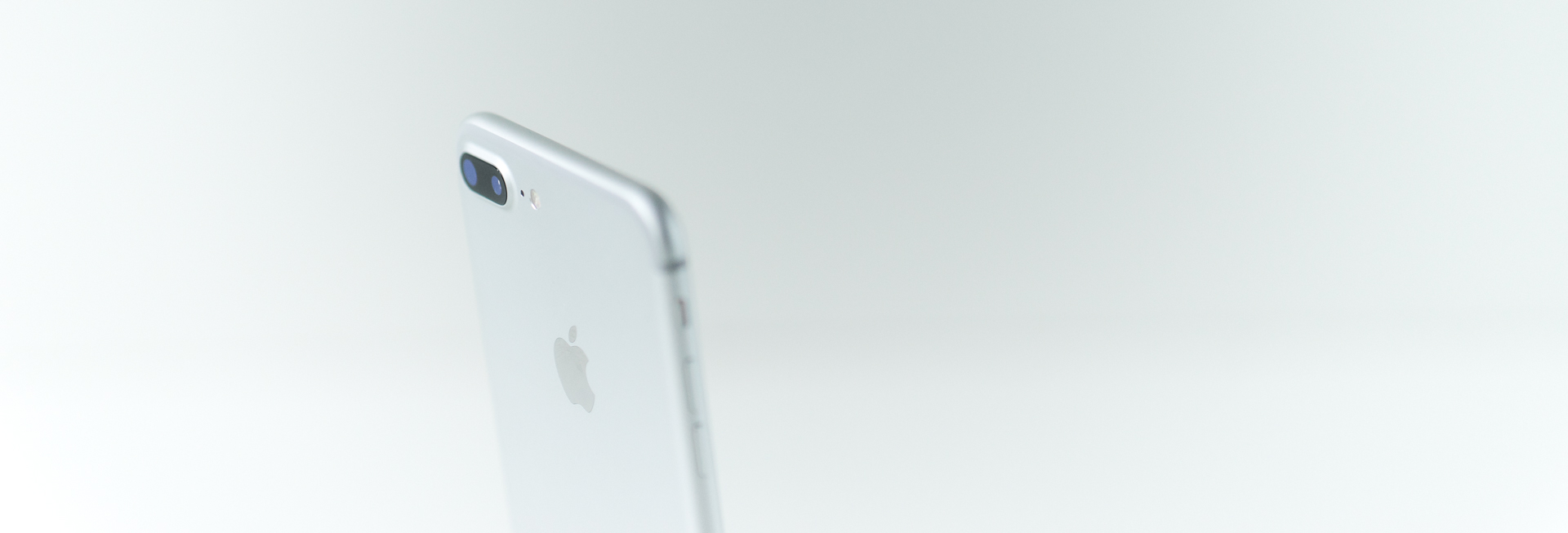
Despite anything Apple will tell you, the iPhone 7 Plus is still not as technically sound as a dedicated camera. However, that doesn’t mean this isn’t the best everyday camera for everyone to use.
However, for the first time, I fervently recommend the iPhone 7 Plus over any dedicated point-and-shoot camera. As an entire package, from the shutter release and focal lengths, to the optical image stabilization, to the display’s color reproduction, to the built-in editing features, and to the sharing features at the end of your shot, the iPhone 7 Plus has instantly become my most used camera system.
The camera housing on the back of the iPhone 7 Plus has a greater protrusion to make room for a 12MP, f/1.8 aperture 28mm camera and an f/2.8 aperture 56mm camera. The larger f/1.8 28mm camera allows in 50% more light than its predecessor, while the 56mm lens allows iPhone 7 Plus shooters to zoom optically to 2x. The additional camera creates an entirely new realm of iPhoneography, even if its results are less than satisfactory at times.
28mm Camera
The iPhone 7 Plus’ 28mm camera trumps the 56mm camera, any day of the week. The 6-element, f/1.8 aperture lets in piles of light, yields sharper results than ever before, and has pushed the iPhone’s camera in low light beyond what I thought was achievable.
Take a look at these photos. The first image was shot with the iPhone 6s in natural light, while the second was shot with the iPhone 7 Plus. While they aren’t identical photographs, you’ll quickly see which camera captures more light and better sharpness. But perhaps more importantly, I’m willing to bet you’ll notice the difference in color quicker than anything else.

Shot with the iPhone 6s in natural light. Note the colors and sharpness.

Show with the iPhone 7 Plus in natural light. The iPhone 7 Plus’ vibrancy and wide color capture is out of this world.
The color coming out of the iPhone 7 Plus, especially under low light, is absolutely stunning. The iPhone 7 Plus photo is sharper, more vibrant, and has a noticeably shallower depth of field. That these improvements came year-over-year is nothing short of mind blowing.
There’s a lot at play to bring this new and improved 28mm into this realm. For one, the optical image stabilization (now available on the smaller iPhone 7 camera as well), combined with the f/1.8 aperture, allows the sensor to absorb more light and for longer than ever before. Apple claims the new sensor can be exposed to light up to three times longer than the iPhone 6s, thanks to the OIS/aperture combination.
Aside from focal length, the 28mm camera’s biggest differentiator from the 56mm camera is its aperture. The 56mm’s lens doesn’t let enough light in to perform well when shooting indoors. We spent our Canadian Thanksgiving weekend indoors thanks to some rain (and snow!), and every shot of our nieces and nephews with the 56mm/2x focal length turned out mushy and noisy. Flipping back to 1x made short work of the indoor setting. Long story short, if you’re looking to test the iPhone’s low light capabilities, focus your efforts on the improvements in the 28mm camera.
56mm Lens
Despite the shortcomings of the 56mm camera — specifically, the f/2.8 aperture and the lack of OIS — the inclusion of 2x optical zoom ushers an entirely new realm of iPhoneography into play. I spent most of our recent trip to Europe with a 55mm lens glued to my camera, so I expect this second camera to be my bread and butter in the long run.
First, the 56mm lens provides a new type of compression to your photos. Here’s an awesome animation to illustrate what I mean:

This animation quickly shows how different focal lengths change the compression of an image. The 85mm focal length is known for giving the best compression to highlight the human face.
The closer you get to the 85mm focal length, the closer you get to a very natural compression for the human face. Aside from the lack of background blur generated in past iPhone cameras, the 28mm compression was the second biggest culprit for horrible iPhone portraiture.
Now, with the 56mm lens, we can pull something like this out of the hat:

Shot with iOS 10.1’s Portrait Mode.
The comfortable compression and simulated background blur make this photo look like it came out of a $1000+ DSLR.
Facial compression is one thing. Another is the ability to eliminate the cruft in the foreground when shooting upwards at architecture, or to shoot a telephoto-styled landscape. Gone are the days where you shoot a scene at 28mm with the intent of cropping the bottom third to better articulate the purpose of the image. Instead, at 2x, you can prioritize the subject of your photo at the press of a button.

Shooting at 2x is a great addition to the iPhone, but the “telephoto” lens could use some improvements as we go forward. In low light, the 56mm’s photos are borderline unusable.
Again though, the 56mm camera has some major shortfalls. In low light, the camera is atrocious. I don’t have a single 56mm shot I’m happy with from our Thanksgiving weekend — every 2x shot has noisy, messy backgrounds, poor color, poor sharpness, and poor depth of field. Without OIS and with its f/2.8 aperture, the 56mm camera is not meant to be a speed demon.
Portrait Mode
Note: As of the time of writing, Portrait Mode was only available as part of the iOS 10.1 Public Beta. As such, any noted shortfalls may or may not be improved or fixed entirely upon official launch.
The 56mm camera’s hallmark purpose is Apple’s “Depth Effect” feature, whereby iOS uses both cameras simultaneously to create a depth map of the subjects in your image and to algorithmically blur the background surrounding your subjects. This background blur — or bokeh — helps to bring better focus to your subject. You can see the iPhone find the subject in your photo and blur out the background in real time, something even DSLRs cannot do.

This is the original shot without the depth of field effect applied.
When there are soft, transparent areas, or where your subject isn’t as obvious in the viewfinder, the iPhone’s machine-learning still has a few things to pickup. It doesn’t take long to spot the errors in this photo — something a DSLR or mirrorless camera is unable to mess up. Under quick browsing circumstances, and on the smaller iPhone 7 Plus screen, the errors are much harder to notice. But put these photos on a larger 27” Retina iMac, and I’ve found myself hitting the delete button more often than not.

After the depth effect has been applied. It’s fairly easy to pinpoint some errors when closely inspected, but when jumping through images in your camera roll, these photos look stunning.
This “Portrait Mode” shoots at the 56mm focal length, so it’s naturally quite poor in low light or with fast moving subjects. The iPhone gives you feedback at the bottom of the viewfinder and asks you to move forward or backward in order to put the subject the appropriate distance away from the camera. Once shot, the iPhone applies the background blur and other small corrections before saving both the non-Depth-Effect image and the Depth-Effect image in your camera roll.

Under good light, and with subjects who create an opaque shape to the background (i.e. no transparent areas between someone’s pigtails and their neck, for instance), this Portrait Mode creates incredible images. For photos like this to come out of my smartphone feels ethereal — sublime even.

Portrait Mode on the iPhone 7 Plus has a ways to go, but it has a tremendously bright future. It’s hard to imagine this not being the future of photography in general — software picking up where the physical hardware cannot overcome the physics of photography. Without a doubt, this machine-learning Portrait Mode will be met with competing software on full-fledged DSLRs and mirrorless cameras someday. It’ll be interesting to see how Apple fits into the software-infused photography industry in the coming years.
Front Facing Camera
I shoot so few selfies, I don’t feel comfortable making any comments.

I don’t shoot many selfies, but when I do, I use the iPhone 7 Plus. The front facing camera is the best front camera on any iOS device.
Objectively, Apple has improved the front facing camera to include a 7MP sensor and wide color capture, allowing your selfies and FaceTime video calls to be sharper and more vibrant. Here’s the single selfie I found on my iPhone so far, just as an example.
Video
Videographers have a wide, wide world of technical specifications to make them drool. I have no idea what bit rates and 4:2:2 recording are, so forgive me for my naive take on the iPhone 7 Plus’ video capabilities.
In short, I’m selling my GoPro.
Coming from an iPhone 6s, this is my first go-round with optical image stabilization. To get handheld stabilization in the iPhone that is on par with a $250 gimbal you can buy for a GoPro is an absolute win, and has me wanting to learn more about video.
Here’s an unstabilized video I shot in Mykonos this summer. I worked very hard to keep my hands stable on this one to capture as much detail as possible. Unfortunately, it’s pretty easy to spot the bumps.
And here’s a short video of me walking towards my wife at the local park. Even though I stood still and panned the landscape with the iPhone 6s in the video above, the iPhone 7 Plus’ stabilization makes my movement feel smoother and more controlled in the video below.
Many people have been spoiled with this OIS since the iPhone 6s Plus, so I’m a little late to the party. But overall, I know now why they raved about last year’s hallmark camera feature.
Display
Apple wouldn’t be able to brag about all those colors if it weren’t for its new display. Of all the new features in this year’s iterative iPhone, its wide color gamut display could be the most noticeable difference when first firing up the iPhone. Not only that, the new display is brighter than ever before.

The iPhone’s new wide color gamut display is instantly noticeable.
Apple has heavily promoted the iPhone’s ability to shoot wide color gamut photos, but there will be a large group of people who can’t view those photos in their full wide color gamut quality. I’m in one of those groups — I edit photos on a 2014 5K iMac and even that machine doesn’t ship with a wide color gamut display. To state the iPhone shoots photos that are too high quality to be properly viewed on Apple’s two-year-old iMac says something about both the quality of the iPhone’s camera and about the quality of the iPhone’s new display.

The iPhone’s wide color gamut display is the only display of its type in my household. As such, I prefer browsing photos on the iPhone and then editing on the larger iMac display.
I’m probably on the outside looking in, but fortunately for most people, photos shot on the iPhone are best viewed on the iPhone as well. I wouldn’t say there’s an overly large incentive to import your iPhone photos into your Mac. Instead, with RAW support, editing photos on the iPhone’s display is likely your best bet for pure color accuracy.
Stereo Speakers
A subtle front-facing cosmetic change on the iPhone 7 Plus is the extended speaker/earpiece. Put side by side with a 6s Plus, the bigger speaker becomes quite apparent. On its own though, you’d be hard pressed to notice the cosmetic change.

When looking at the iPhone 7 Plus straight on, the only discernible change is the larger front speaker/earpiece.
But navigate to the music app and turn up the volume, and you’re bound to hear the difference. From increased volume for music, videos, and podcasts, to louder, more apparent notification alerts and ringtones, these louder stereo speakers are impressive.
I fired up good ol’ Shoot to Thrill on my wife’s iPhone 6s and on the 7 Plus, and you don’t need to listen for more than two seconds to know which phone is louder. The iPhone 6s sounds more narrow, as though the sound is being emitted from a little box. Not only is the sound less loud, it’s less complete. The iPhone 7 Plus’ speakers are louder, more complete, and have a noticeable amount of increased volume on the low end. Where the iPhone 6s surprises you with sound, the iPhone 7 Plus can flat out knock your socks off if you don’t know what to expect.

Instead of an analog headphone jack, we now have more room for louder speakers and improved microphones on the bottom of the phone.
Apple calls these stereo speakers, but they don’t fire in opposite directions. On the bottom edge, the speaker fires as it always has. With the front speaker situated in the earpiece, you’ve got a second, front-firing speaker. I’m not sure if this fits the purest definition of the term “stereo speakers”, but the speakers do play right and left channels, allowing for a more rounded, more complete sound.
Headphone Jack
I can’t boast and claim I know this ultra-large, diverse group of individuals who have firmly held opinions about the analog headphone jack. For the 15 to 20 people I’ve talked to about the absent headphone jack, I have yet to find someone who has said Apple is absent-minded in their decision.
In short, I’m just not convinced the group of people who don’t use an analog headphone jack is as small as it’s been made out to be in prior, more critical reviews. Put another way, there are tons of people who just don’t care that the analog headphone has been removed.
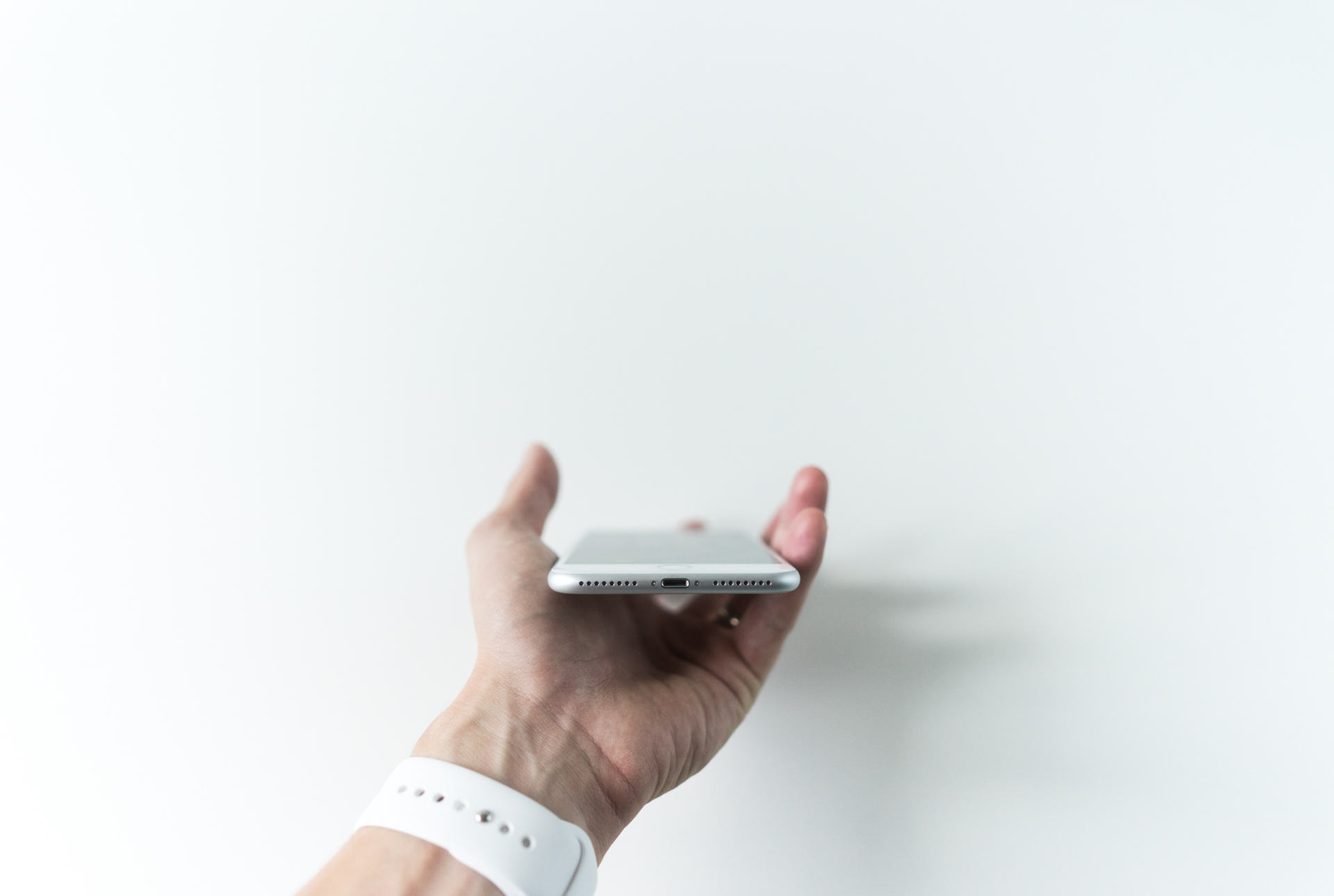
The headphone jack has been removed from the newest iPhones. Oh well.
I’m one of them. I opened the Lightning EarPods on the morning I received my iPhone 7 Plus just to see what the connector looked like, and I literally haven’t touched them since. And I know I’m not alone.
As a result, I’m overly positive about the decision to remove the headphone jack. Removing the jack makes room for increased battery life, improved haptic vibrations, and a water resistance rating we haven’t had before. Without a doubt, the cost/benefit tradeoff is tremendously favourable in my arena.
Which isn’t to say this isn’t a big change for a large group of different individuals. The headphone market is clearly a big one, so someone has used that headphone jack extensively in the past. For those people, I can understand this decision could change your workflow slightly. To read some of the extra-critical opinions about removing the headphone jack though, you’d think Apple committed economic suicide. I believe these opinions are slightly overblown.
I’m very excited to try Apple’s AirPods when they are officially released. The W1 chip and incredibly easy connectivity to Bluetooth devices seems like a dream (finally) come true. But, to be honest, I’m more excited to try the AirPods with the Apple Watch than I am to connect them to the new iPhone.
Performance and Battery Life
While you’ll notice the slightly new iPhone 7 Plus design, and you’ll notice the improved wide color gamut display along with the jaw-dropping dual-camera portrait photos, the most subconscious and impactful improvement in the iPhone 7 Plus is its boosted performance.
The iPhone 7 plus screams. It rips from one end of iOS to the other, with no hiccups, no glitches, and no pauses along the way. Had an old tab in Safari you wanted to revisit? Don’t worry, the 7 Plus’ 3GB of RAM will still have the tab instantly available. Want to process 4K video in iMovie? Apple’s A10 Fusion SoC tears through the footage. Need to edit some RAW photos from your Sony camera in the car between shoots? Again, the iPhone 7 Plus’ processor gets the job done faster than ever before. So fast, in fact, that the iPhone 7 Plus outperforms the MacBook on which I’m writing this review — a 2016, Core m5 MacBook which costs well north of double the iPhone 7 and 7 Plus.

The iPhone 7 Plus’ A10 Fusion chip is extraordinarily fast, outpacing some of Apple’s notebooks.
From Apple’s website:
With an all-new four-core design, the A10 Fusion chip’s CPU has two high‑performance cores and two high‑efficiency cores. The high‑performance cores can run at up to 2x the speed of iPhone 6, while the high‑efficiency cores are capable of running at just one-fifth the power of the high‑performance cores. That means you get the best performance and efficiency when you need it.
Coming from an iPhone 6s, I find it difficult to understand how much of a difference those high-efficiency cores make for battery life. With the iPhone 7 Plus, I can now get at least two days of use between charges, and I have Bluetooth and many location services operating throughout the day. This would have killed that iPhone 6s by about 4:00PM, without a doubt. How much of this increase is attributed to the new A10 chip and how much is attributed to the increased battery size is beyond me, and I can only mention how amazing it is to never worry about my phone dying at the wrong time of the day.

Some people have noted the dual camera system and Portrait Mode as slight battery hogs on the iPhone 7 Plus. I haven’t used Portrait Mode for long periods of time, but the computing power needed to create that depth map seems like a logical explanation for quickly-drained battery life.
This experience may not be shared by everyone though. My sister has a new iPhone 7, and she kills her battery on a daily basis. Compare this to her old iPhone 6 making it through each day, and I’m left wondering if she has a defective battery. I’ve told her to visit the Apple Store, but if her experience is any indication, there’s a chance my incredibly improved battery life isn’t a blanket improvement for everyone.
Quick Addendum: The New Apple Leather Case
This year’s Apple Leather Case is the best yet. Last year, I took a look at a wide range of iPhone 6s cases for The Sweet Setup and came away most impressed with both of Apple’s offerings. In the end, I had to side with the Silicone Case, just because of how mushy the buttons felt on the Leather Case.

Apple’s new iPhone 7 Plus Leather Case in Storm Gray.
In a way, I wonder if Apple read our review. Every complaint I had about the Leather Case was addressed this time around. The Leather Case comes in the same colors as last year along with new Storm Gray and Sea Blue colorways. The Leather Case now has a smoother, more rounded camera cut out, machined aluminum sleep/wake and volume buttons, and a more pronounced debossed Apple logo.

Last year’s leather case had a hard plastic rim around the outside of the camera cutout. This year’s case slowly tapers down to the iPhone’s backside. I appreciate the subtle change.

The case’s machined aluminum buttons are a major improvement over last year’s buttons.
Over time, the Saddle Brown Leather Case for the iPhone 6s began to show its age. Usually that saddle brown color ages very well, but my cases tended to pick up the color of my pants pretty quickly — I have blue-y, dirty corners which are very worn down. The iPhone 7 Plus Storm Gray has so far aged a bit better than the Saddle Brown 6s case, but I’m sure only time will tell how it truly ages.

I think the Storm Gray color looks a lot like a weathered rock after picking up some scratches and bruises.
Like the iPhone itself, Apple continues to iterate away at its cases. From the horrid iPhone 4 bumper to the catastrophic iPhone 5c case, Apple has appeared to learn from its mistakes. The latest Apple Leather Case is the best I’ve ever used and has quickly become a must-have day one purchase for any new iPhone.
Conclusion
Off the top, I mentioned I was getting older. This is iPhone Number Ten, and iPhone Number Five for Josh. Until now, I’ve been swept off my feet by newer and newer features that only the latest iPhones possessed.
The iPhone 7 Plus feels like a turning point for me. It quickly reminded me about everything I loved in the 6 Plus — the larger software keyboard, better battery life, and bigger screen size were all things I was very excited to return to. All the headline features, like water resistance, a new home button, and that dual camera system were nice side bonuses that made the purchase that much easier.
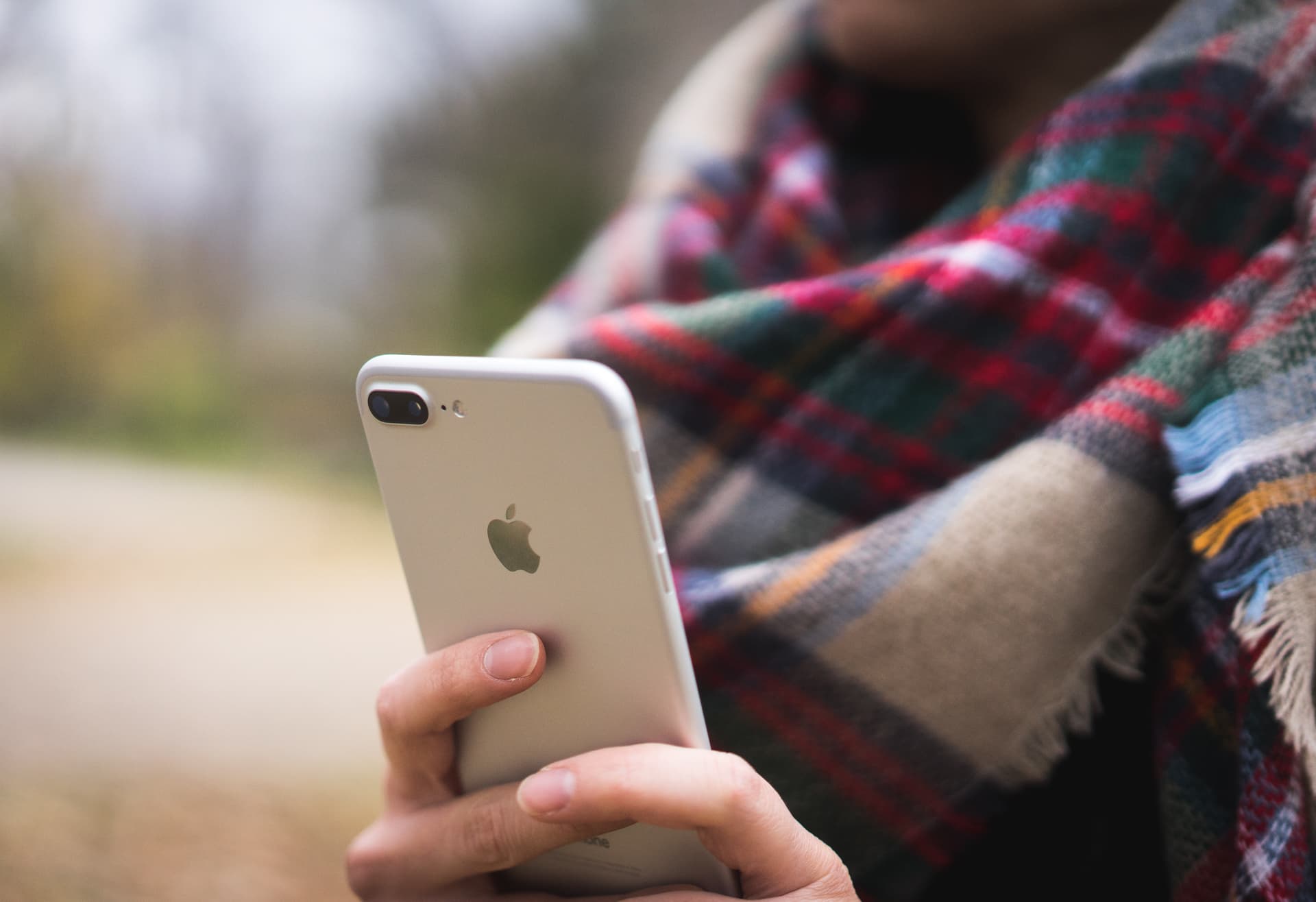
Never before, though, has an iPhone upgrade felt like such a frivolous purchase. The iPhone 6s Plus, in all respects, is still an incredible phone. I mean, it still has better real world speed than Samsung’s latest Note 7 (any phone will be faster than a scorched, recalled Note 7, mind you). I admire Apple’s continuous iteration. I’m grateful for everything that is new inside the iPhone 7 Plus. It’s easily the best iPhone yet. But it’s not replacing a poor iPhone by any stretch.
So, down here on Planet Earth, do the new iPhone 7 Plus features garner an upgrade for 6s Plus users?
“You know,” I added quickly before leaving the gas station, “If you don’t have the cash, I’m not sure the new iPhone is a must-have upgrade.”
The cashier looked puzzled and slightly shocked.
“Actually?”
I replied pretty matter of factly.
“Well, it’s an iPhone. It’s got a cool camera and it’s faster, but I’m not sure it’s $800 (CAD) faster. You can drop this one in the water, but you probably don’t drop your phone in the water anyway. Plus, the old one has the headphone jack.”
He raised an eyebrow.
“Makes sense. That is a ton of money for only a few new features. The phone even looks the same as last year’s!”
He took to my comment just as I had hoped.
The cashier quickly threw a question in before I left.
“Hey, did you see the new Apple Watch Series 2?”
I smiled, opened the door, and answered as I left.
“Definitely.”